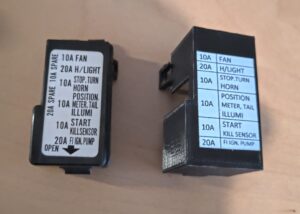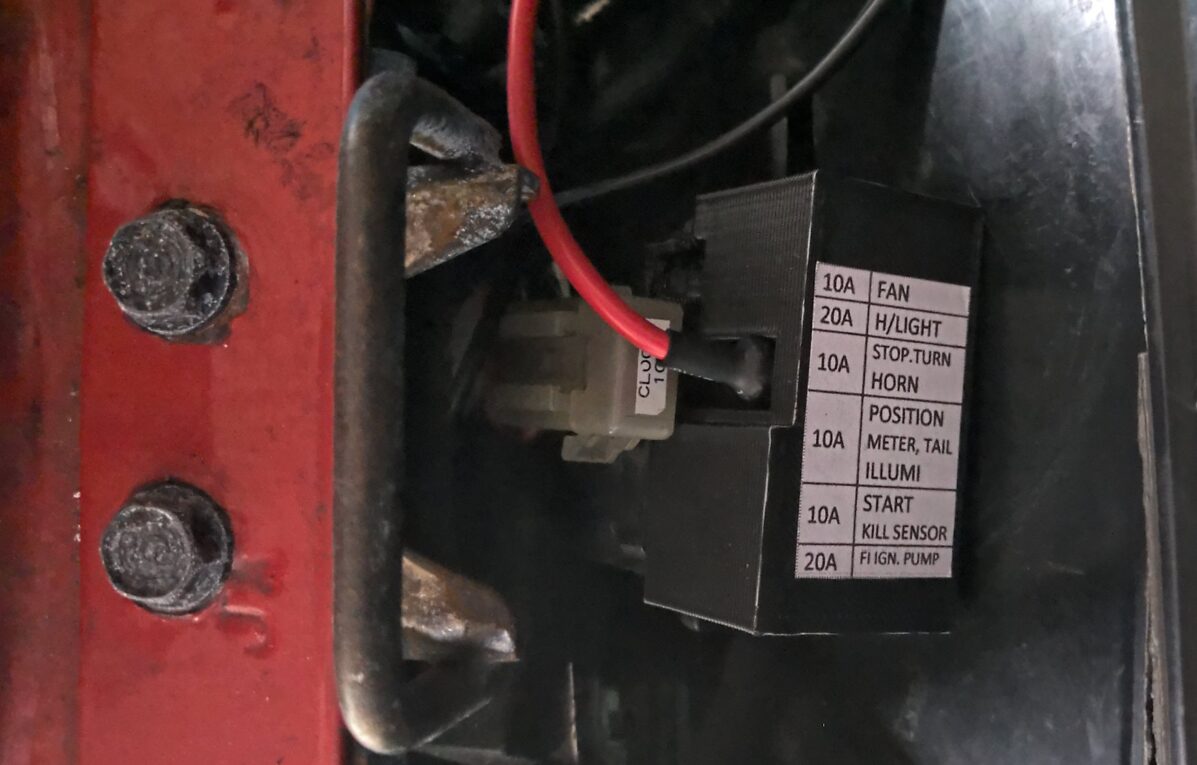I added some heated grips to my VFR 800 Fi during it’s rebuild (a necessity when biking through winter, though I also use heated gloves for the colder weather). Unfortunately, I wired them up direct to the battery and and only remembered this when I left them on one day and returned to a dead battery.
The best way to ensure this doesn’t happen is to connect the grips into a circuit that is only live when the engine circuit is active (this is what I intended to do originally, but didn’t – so I deserved the rude reminder!).
The easiest way to add a new circuit these days is to buy a fuse adaptor that allows you to add another fused circuit to an existing fuse. Rewiring the heated grips using one of these was easy, but once done the fuse cover would no longer fit.
I’ve had a 3D printer for several years (the Mini Select IIIP, with various custom nozzle enhancements) but most of what I print has been downloaded from Thingiverse. That wasn’t going to work for a custom fuse cover.
I’ve had a go with a few full fledged CAD tools that can be used for 3D printing, but the learning curve on those are huge and apparently my brain simply doesn’t work that way. However, during my hunt for a Raspberry Pi Zero case recently I came across OpenSCAD, which is a programmer‘s solution to designing 3D objects (most CAD programs are built with designers and engineers in mind).
I’d found a Raspeberry Pi Zero case design on Thingiverse that included the OpenSCAD source file. I spent an hour or two experimenting with that and realised that I should be able to use it to create a fuse cover.
OpenSCAD is essentially a scripting language that you can define 3D objects with and then move/combine them in various ways. You can also parameterise the definitions so that you can make changes easily (e.g. box sizes). As a developer, this makes far more sense to me than the complicated UIs of CAD software.
The resulting fusebox is pictured. It worked out really well with only a few prototypes – in fact, I prefer it to the original as this one clicks nicely into place. In case anyone else ever has a need for similar, I published the files on Thingiverse (including the OpenSCAD source).
Note that there may be problems printing the side tab depending upon your printer (as it overhangs). This could be resolved by extending the tab supports for the whole height of the box. I was happy with the result without doing this, though may revisit when I need to add a new circuit in the future (which will be when I wire in the USB sockets I’ve installed on the bike).
I’m looking forward to playing with OpenSCAD some more.
Here’s the original fuse cover next to the replacement:

